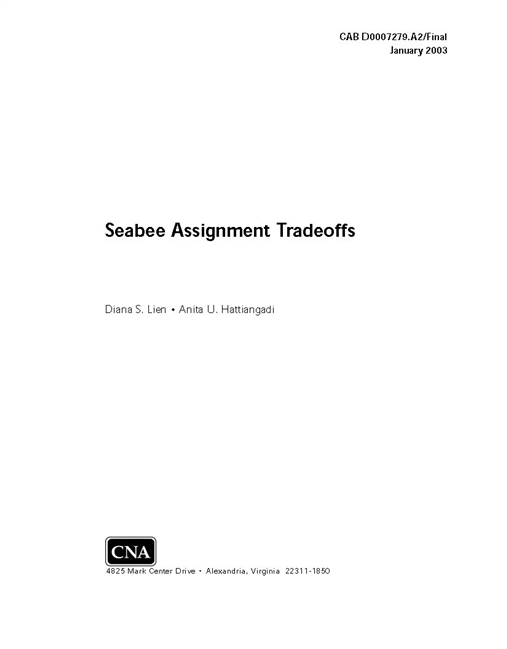Looking at primary deployment location, we find that Rota is preferred to either Guam or Okinawa. Guam is preferred to Okinawa. Although the preference ranking is consistent for all subsamples, the level-of-preference difference between locations is not significant. While compensating Seabees for going to a less preferred primary deployment location, such as Okinawa, would most likely increase willingness to volunteer for those assignments, we don’t find any indication that the location of deployment is the most arduous characteristic of deployments.
The results suggest that sea duty deployments are arduous, and that a large portion of the perceived benefit from a decrease in sea tour length is from the corresponding decreases in time spent deployed.
The recent Navy special pay, Assignment Incentive Pay, was developed to man less preferred locations. In the case of Seabee manning at Gulfport, MS, and Port Hueneme, CA, we find no indication that either location is particularly less preferred. Considering the preferences of Seabees currently at those locations, we find a preference to have multiple sea tours at the same location. This preference was particularly strong for married Seabees. Two ways to address this concern are compensating Seabees who switch locations or attempting to minimize moves through such a policy as homebasing.
We find that estimated reenlistment intention is affected by all of the sea duty characteristics examined; however, it is affected most by changes in special pay received.
Download reportApproved for Public Release; Distribution Unlimited.
Details
- Pages: 66
- Document Number: CAB D0007279.A2/Final
- Publication Date: 1/1/2003
